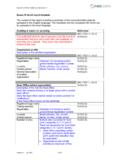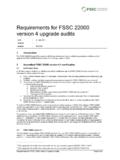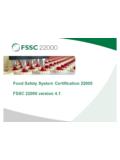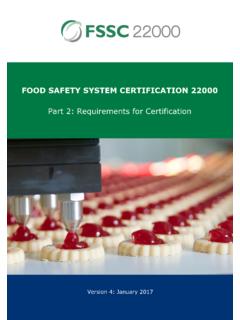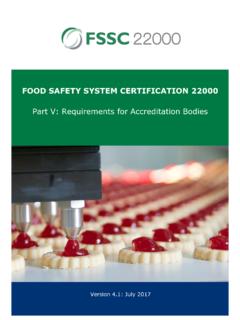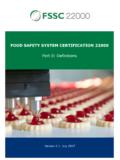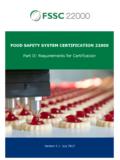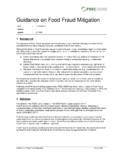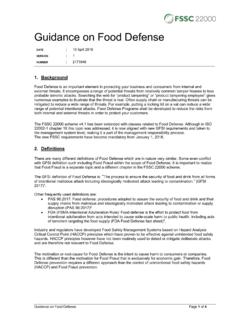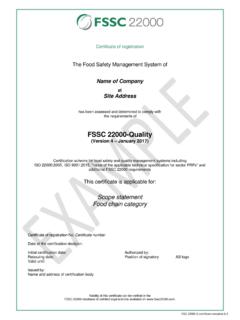Transcription of 5 December 2017 - FSSC 22000
1 guidance grading critical nonconformity DATE : 5 December 2017. version : NUMBER : 2055436. Introduction In accordance with the definitions in the Scheme (Part 0 and Annex III to Part IV) and as defined below, the CB is required to establish and maintain criteria as a reference against which to determine the level of nonconformities resulting in three grading levels: 1. Minor nonconformity;. 2. Major nonconformity;. 3. critical nonconformity. Definition A critical nonconformity is defined as direct food safety impact without appropriate action by the organization when observed during the audit or when legality and/or certification integrity are at stake. Example situations Example 1. During the walk-around on the shop floor of the manufacturing facility, the auditor observes that there is fluid dripping into open product on one of the sushi production lines.
2 The observation occurs during the staff break when the fish filleting machine has stopped running. After a short investigation, the auditor concludes that this fluid is coming from a part of the machine that is not draining properly. The operator estimated that this fluid could have been there for a few days before dripping onto the product. The product is subject to direct product contamination without the organization's staff directly acting to rectify the situation. The auditor is recommended to complete the audit anyway and issue a critical nonconformity after consultation with the responsible CB manager. The organization is obliged to contact the local authorities while initiating a product recall in case product has already been sent to the market after the maintenance event happened.
3 Example 2. The allergen management system of the organization has been certified against an independent allergen management certification scheme. However, during the audit, it is observed in the dispatch area that the product labelling of allergens is not in bold letters as required by law of the country where products are to be sold. The fact that the product label does not fully comply with the legal labelling requirement, does not justify the issue of a critical nonconformity. However, it would be justified to issue a major noncompliance because it is a breach of the law that does not impact food safety. In case the product label would not have declared allergens that would have been present in the product, a critical nonconformity is to be issued as there is a direct impact on food safety.
4 guidance grading critical nonconformity 1.
